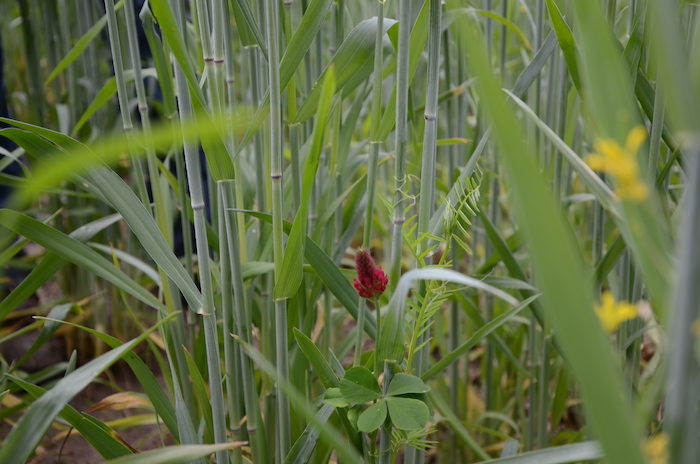No-till practices don’t just save labor, fuel and machinery costs, but benefit the mysterious biological world beneath the soil surface that can have a big impact on plant health and yields.
While there isn’t enough evidence to show plants actually “talk” to each other, there’s plenty of research that verifies plants play an active role in seeking nutrients, defending themselves from pests and disease, responding to invasive plants and stimulating soil microbial activity, says Kearney, Neb., soil scientist Ray Ward of Ward Laboratories.
Natural Defense
Plants emit at least 90 different compounds, or organic chemicals, in responding to environmental conditions, and a host of environmental factors can stimulate a plant to produce and emit one or more compounds to aid that plant in growth or survival, he says.
Plant roots produce three major compounds: citric acid, malic acid and oxalic acid.
Citric acid is a sharp-tasting crystalline acid present in the juice of lemons and other sour fruits. Malic acid, also a crystalline substance, is found in unripe apples and other fruits, and oxalic acid is found in rhubarb leaves, wood sorrel and other plants.
“When a plant leaks out one of these acids, it’s because the plant is in need of some kind of nutrients, needs to ward off pests and pathogens or aid itself in some way,” Ward says. “Seeking nutrients is a common reason plants exude chemicals.”
Complicated Picture
The process through which soil microbes deliver nutrients and other elements to plant roots is complex and takes place in the rhizosphere — the region of soil that surrounds —and is influenced by, plant roots.
Chemicals released by plant roots diffuse through the soil, attracting soil organisms that rely on those plant compounds for food. Mychorrizae, the association plants form with fungi that give them access to soil nutrients and protect against disease, are also part of the process.
“This is a dynamic or symbiotic relationship,” Ward says. “Plant roots produce food that soil microbes need. Soil microbes deliver food or other elements that plants need. It’s a delicate balance.”
Plants not only seek help from surrounding soil but also work with the soil, using biochemical messaging to interact on a level scientists don’t yet understand.
One example that may help illustrate plant synergies, however, is with cover crops. Ward knows from conducting studies and observing plant growth that diverse cover-crop mixes perform better than single species covers under a variety of conditions.
“We saw that in 2006 at North Dakota’s Burleigh County NRCS test plots,” Ward says. “Because it was so dry that year, a single species cover-crop test plot burned up by mid-July. It was planted right next to a plot seeded with a cover-crop cocktail, which remained green and growing throughout that season.
“We don’t understand exactly why plant diversity is so important. We just know that a diverse group of plants performs much better than a monoculture.”
The Next Step
So how can farmers take advantage of this symbiotic relationship between plants and soil microbes?
“No-till is the first step in creating the conditions that support this symbiotic relationship,” Ward says. “Conventional tillage destroys the soil structure that soil microbes need in order to survive. No-till also builds soil organic matter, which helps feed soil microbes, in turn feeding and protecting plants.”
Plant diversity can be achieved by growing a balance of warm-season grasses and cool-season grasses, warm-season broadleaves and cool-season broadleaves, that encompass major plant types that naturally grow in uncultivated regions.
“By promoting an environment in which plants can interact, soil microbial activity can be stimulated by plants, and farmers will benefit in several ways,” Wards says. “They can reduce input costs, because soil microbes can provide more nutrients and more water to plant roots than the plants are able to obtain on their own.
“Plants are also more resistant to pests and pathogens in this kind of environment, so those kinds of inputs also decrease. Plant health improves and overall yield improves.”
Find Out More
Before making specific recommendations about plant diversity, Ward says scientists need to learn more about the compounds plant roots exude, and how and why plants interact with one another.
“To take advantage of some of these things, farmers must first have a thorough understanding of their current soil health,” Ward says. “Then they should determine what their soil needs in order to improve soil health.
“What is the length of your growing season? What results do you need from a cover-crop mix?” he adds. “These are just a few of the questions a farmer needs to answer to make decisions about using plant diversity to stimulate soil microbial activity and improve soil health.”







Post a comment
Report Abusive Comment